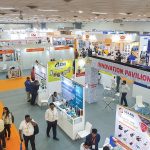The Networks Asia Connect Cable System (ACC-1) will provide a transmission speed capacity of 240Tbit/sec. The submarine cable by Indosat Ooredoo is going to connect countries including – Indonesia, Singapore, Australia, Japan, and the US.
February 15, 2022

Central Jakarta, Indonesia-headquartered Indosat Ooredoo Hutchison and Inligo Networks, an independent private subsea cable owner and operator have signed an MoU to develop a submarine cable spanning a length of 18,000 km. The submarine cable is going to connect countries including – Indonesia, Singapore, Australia, Japan, and the US.
The Networks Asia Connect Cable System (ACC-1) will provide a transmission speed capacity of 240Tbit/sec, with 40 fibres and each fibre carrying 40 frequencies. The planned cable route will be connected with five Indonesian cities including the tech manufacturing centre in Batam, Singapore, the northern Australian city of Darwin, the fledgling nation of Timor Leste, Tokyo, and eventually terminate in Los Angeles and Portland, Oregon, with a stopover on the island of Guam.
Watch: Wire & Cable Industry Budget 2022 Reactions
Indosat Ooredoo Hutchison was established last year consequent to the negotiations between Indonesian telecom operator Ooredoo and Hong Kong-based CK Hutchison. It was in 2020 that Hutchison and Ooredoo declared their plans to combine their businesses, but it took more than a year and various negotiations for the conclusion of the deal that took place on January 4 this year.
The Minister of Communication and IT in Indonesia Johnny G. Plate has recently expressed the aspiration for the nation to become a regional hub for submarine cables.
Also Read: Hawaiki Subsea Cable Network to Connect Singapore, Australia, and the USA
Inligo is developing a terrestrial network that connects Australia to Darwin, and once ACC-1 and the trans-Australia link come into operation, the connection will deliver the country’s lowest-latency connection to South-East Asia. The construction of the submarine cable by Indosat Ooredoo is expected to commence this year, and it is set to be fully operational in 2024.




